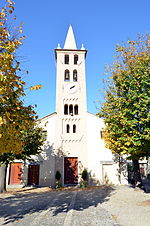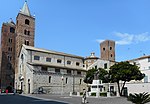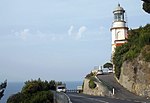Lusignano

Lusignano (or Lüxignan in Ligurian) is a hamlet in the municipality of Albenga, in the province of Savona, Italy. It is located about 4 km from the town of Albenga in a narrow strip of plain between the river Centa and the foothills bordering the plain to the south. The mountains are called the rock of pistulè. The name derives from the fundi rustic as Antognano, Aregliano, Velirano, Verano, all large-scale and exploiting the fertile plain. The country is crossed by a river named Rio Carpaneto. The town developed along the ridge with a rather complex system, likely evidence of a more ancient origin than the other city of the plain. During the excavations for the construction of a new residential complex in the region of in Rusineo, there were the ruins of a Roman villa of considerable size, which indicates a Roman presence in the area.
Excerpt from the Wikipedia article Lusignano (License: CC BY-SA 3.0, Authors, Images).Lusignano
SP6,
Geographical coordinates (GPS) Address Nearby Places Show on map
Geographical coordinates (GPS)
| Latitude | Longitude |
|---|---|
| N 44.046944444444 ° | E 8.1719444444444 ° |
Address
SP6
17031
Liguria, Italy
Open on Google Maps









